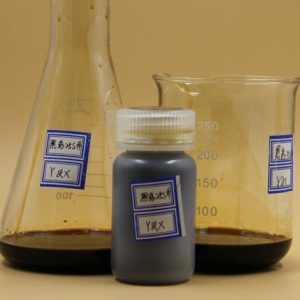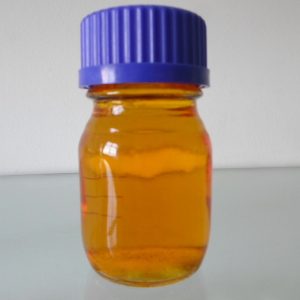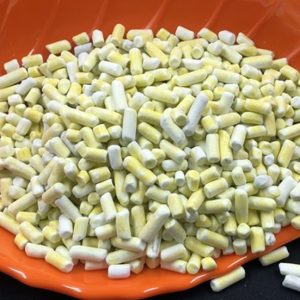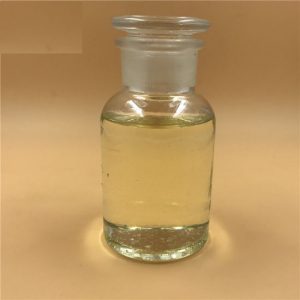Description
Alkyl Hydroxamic Acid 60% have emerged as versatile chemical compounds with diverse applications across various industries. While they exist in many forms and concentrations, a 60% solution of Alkyl Hydroxamic Acid stands out for its specific benefits and practical uses. This article aims to explore what Alkyl Hydroxamic Acid 60% is, its key properties, and the significant roles it plays in different sectors.
Understanding Alkyl Hydroxamic Acids
Hydroxamic acids are a class of organic compounds characterized by a specific functional group: -CONHOH. The “alkyl” component refers to an attached hydrocarbon chain, which can vary in length and structure, influencing the properties of the specific hydroxamic acid. Alkyl hydroxamic acids are generally weak acids and demonstrate strong chelating abilities, particularly towards metal ions. This chelating power is the cornerstone of many of their applications.
Alkyl Hydroxamic Acid 60%: A Concentrated Workhorse
The designation “60%” refers to the concentration of the active alkyl hydroxamic acid in a solution, typically in a solvent such as water, alcohol, or a mixture of both. This specific concentration provides a balance between effectiveness, ease of handling, and cost-efficiency for many applications. It allows for a readily available and manageable liquid form of the chemical, which can be easily diluted to various working concentrations as needed.
Key Properties of Alkyl Hydroxamic Acid
Chelation Power: As mentioned earlier, the strong metal-chelating ability of alkyl hydroxamic acids is their most significant attribute. They can form stable complexes with metal ions, effectively binding them and preventing unwanted reactions.
Surface Activity: Some alkyl hydroxamic acids exhibit surface-active properties, behaving as surfactants. This dual nature of chelation and surface activity makes them particularly valuable in certain applications.
Selectivity: By varying the alkyl chain attached to the hydroxamic acid, it is possible to fine-tune the selectivity towards specific metal ions. This allows for targeted metal removal or separation in different processes.
Stability: At a concentration of 60%, Alkyl Hydroxamic Acid offers good stability, meaning it’s less likely to degrade under normal storage conditions.
Solubility: The specific solvent used in the 60% solution formulation can be changed to optimize solubility for different applications. This is one of the major advantages of using a 60% solution.
Applications Across Industries
The unique properties of Alkyl Hydroxamic Acid make it an important component in diverse industries:
Mining and Mineral Processing: This is arguably where Alkyl Hydroxamic Acid 60% finds its most significant use. It acts as a flotation collector, selectively binding to specific metal-containing minerals, allowing them to be separated from gangue (waste rock) through froth flotation technology. This is especially crucial for extracting valuable metals like copper, nickel, and zinc.
Water Treatment: The chelating ability of Alkyl Hydroxamic Acid 60% makes it effective for removing heavy metal ions from wastewater. It can bind to these metals, facilitating their separation and preventing harmful environmental pollution.
Corrosion Inhibition: The metal-complexing nature of Alkyl Hydroxamic Acid 60% can help in preventing corrosion in pipelines and industrial equipment, particularly in acidic environments.
Oil and Gas Industry: Alkyl hydroxamic acids are used as scale inhibitors in oil wells and pipelines, preventing the formation of unwanted mineral deposits, which can hinder production and flow.
Specialty Chemical Synthesis: They are also used as intermediates in producing specialty chemicals and pharmaceuticals, leveraging their unique reactivity for specific synthesis reactions.
Agriculture: Some derivatives of Alkyl Hydroxamic acid are being explored for use as fertilizer additives, improving the uptake of essential nutrients by plants.
Why 60% Concentration Matters
The 60% concentration is often preferred for several reasons:
Ease of Dilution: It offers a convenient starting point for diluting to desired concentration levels, reducing the cost and logistical challenges of handling a more concentrated form.
Stability: It generally offers a good balance between stability and reactivity, ensuring suitability for a variety of conditions.
Cost-Effectiveness: A concentrated solution like a 60% formulation often represents a more cost-effective way of purchasing and using the active component.
Safety Considerations
While Alkyl Hydroxamic Acid 60% finds wide application, certain safety precautions must be followed:
Proper Handling: The solution should be handled with appropriate personal protective equipment like gloves and eye protection.
Storage: Should be stored in a cool, dry place away from incompatible materials.
Ventilation: Adequate ventilation should be provided in areas where it’s used, especially in large quantities.
Conclusion
Alkyl Hydroxamic Acid 60% is a powerful and versatile chemical compound with a wide array of applications, from mineral processing to water treatment. Its unique chelating capabilities, combined with its stability and adaptability, make it an important ingredient in numerous industrial processes. Understanding its properties and applications will only further its potential as a key player in various technological advancements. As research continues, we are likely to see even more innovative applications of Alkyl Hydroxamic Acid and its derivatives in the future.







Reviews
There are no reviews yet.